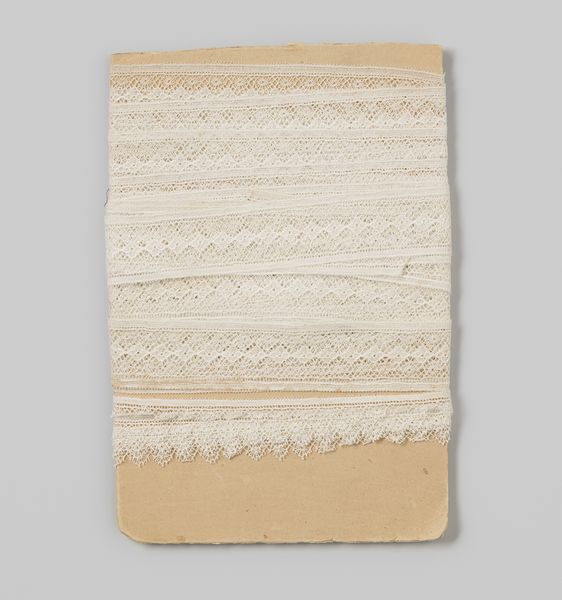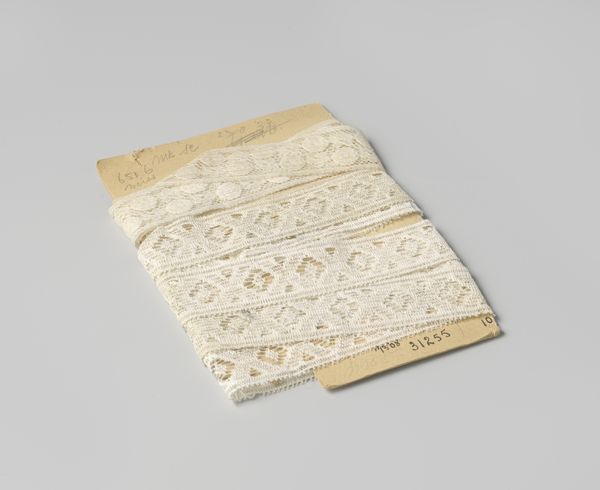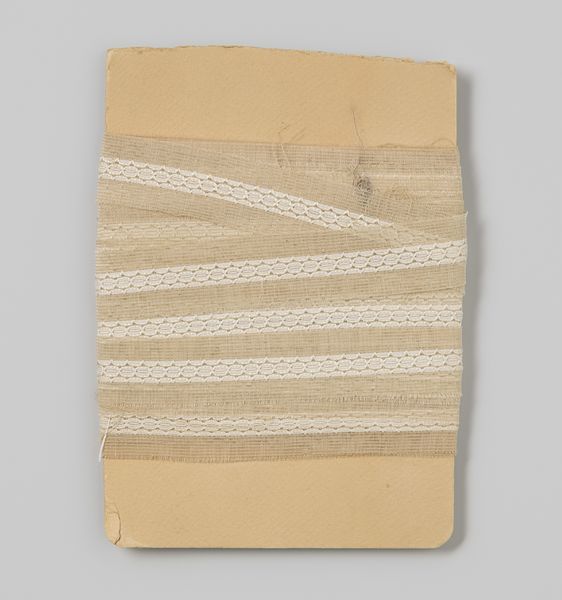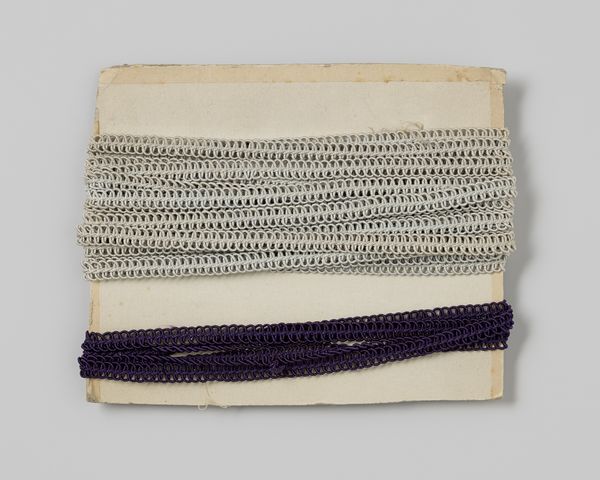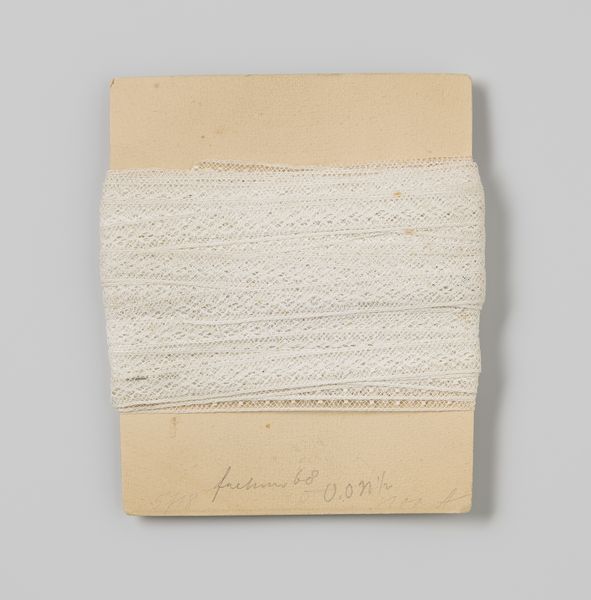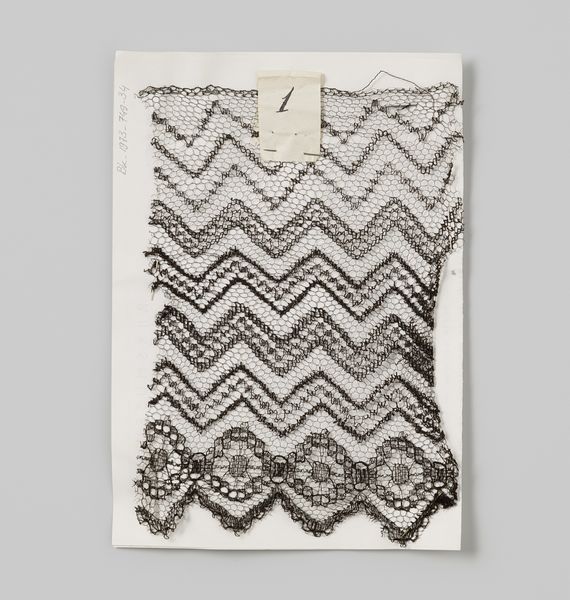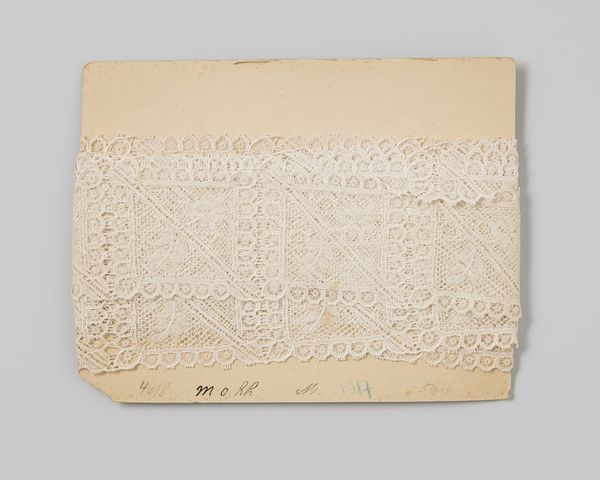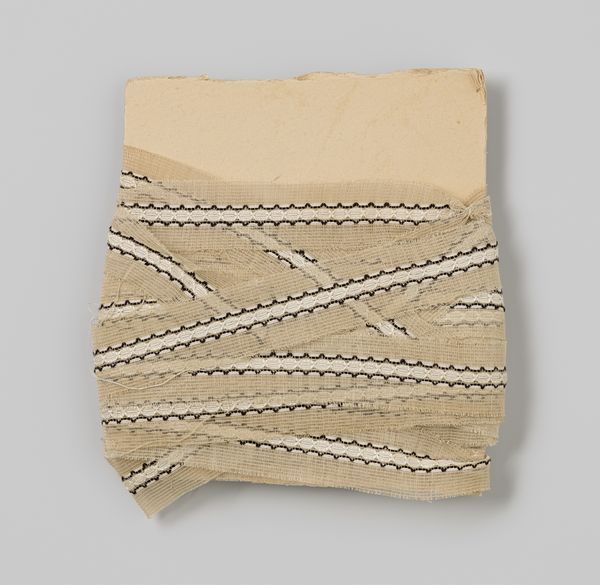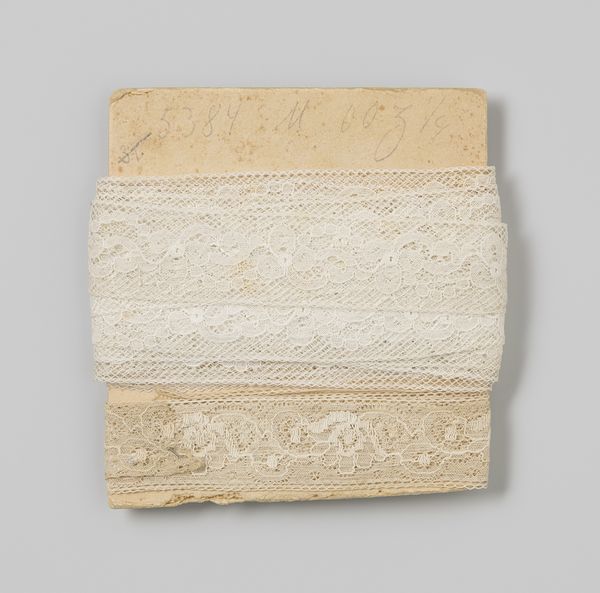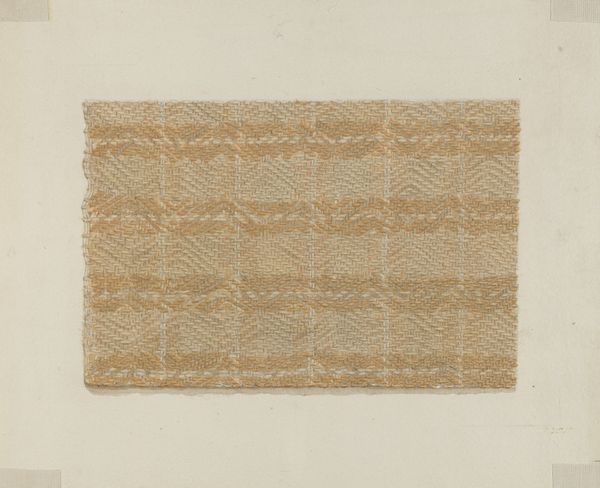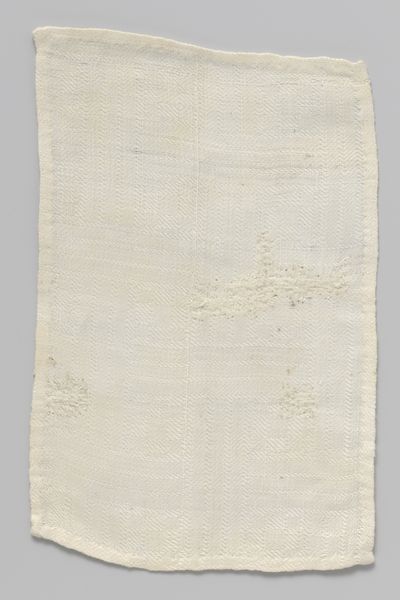
textile
#
textile
#
decorative-art
Dimensions: width 2.4 cm, length 17 cm, width 12 cm
Copyright: Rijks Museum: Open Domain
Curator: Looking at "Tussenzetsel van witte kant met golvende lijn," created around 1920, one is struck by its quiet elegance. As a piece of decorative art, it holds an intriguing position. What's your first impression? Editor: There's a delicacy, almost a whisper, to the lace. The repeating geometric patterns create a mesmerizing visual rhythm, and the color evokes a sense of purity and refinement. Curator: Lace, historically, isn’t merely decorative. Its production was intensely gendered labor—entire communities of women dedicated their lives to its creation, impacting economic and social structures. It’s a potent symbol of femininity, labor, and class. Editor: The construction itself speaks volumes. Look at the meticulous arrangement of threads, forming this intricate structure that transcends its function. It reminds me of classical ideals of harmony and proportion. Curator: Exactly. The level of detail suggests hours of meticulous work, likely within highly constrained conditions. Moreover, lace's role in adorning clothing signified status and power. Considering this piece, did it reinforce or subvert social hierarchies of the time? Editor: It does have an understated sophistication, but it invites closer inspection, revealing layers of detail. I see how this meticulous structure might represent an ordered world, built from delicate, interconnected parts. Curator: Considering that many lace-making communities suffered economic hardships during this era, this piece gains even greater weight. The beautiful hides complex realities of survival. Editor: Analyzing just its pure visual aspects, it is remarkable to appreciate the geometric repetitions of waves, juxtaposed to those almost pixelated details on the band that features the textile. The structural integrity emerges as the primary carrier of artistic significance here. Curator: Your point illustrates the interesting paradox within art like this. Formally, the elegance is undeniable, yet it obscures the struggles that went into its production, complicating its visual beauty. Editor: Perhaps that inherent duality – its elegance masking complex realities – contributes to its enduring appeal, sparking conversation across history, technique, and context. Curator: Precisely. We must continue to investigate the layers and open dialogue between artistic value and the sociopolitical stories intertwined.
Comments
No comments
Be the first to comment and join the conversation on the ultimate creative platform.
